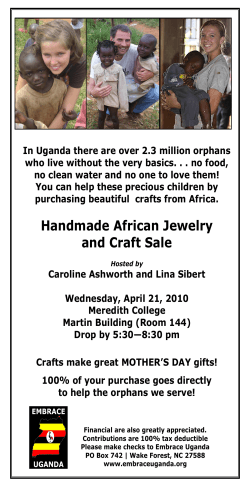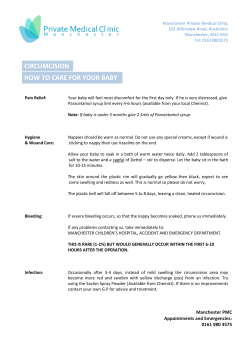
VMMC Infographic 2
Health Communication Makes an Impact on Voluntary Medical Male Circumcision Community-based voluntary medical male circumcision (VMMC) campaigns combined with mass media change attitudes related to VMMC. 12% 89% OF MEN EXPOSED TO OF MEN EXPOSED TO STAND PROUD TOOK ACTION STAND PROUD A population-based survey in Zimbabwe showed 68% of women and 53% of men had heard about VMMC, mostly through radio.2 GOT CIRCUMCISED 53% 89% of men exposed to Uganda’s Stand Proud, Get Circumcised multi-channel campaign including community mobilization reported taking at least one action as a result. Of these, 12% reported getting circumcised.1 68% Adolescents are getting circumcised in increasingly higher numbers. Between 2010 and 2013, the number of VMMC clients per month during school campaigns more than tripled when compared with the same period outside campaign months.3 2010 1 2015 80% In Zimbabwe, where community activities and mass media campaigns took place, adolescents account for 48% of all VMMC clients. 3 In Tanzania, school-based campaigns resulted in adolescents making up 80% of all VMMC clients in two regions. 3 48% AFFORD (2012). Uganda Joint Behaviour Change Communication Survey. Uganda: USAID. 2 Hatzold, K., Mavhu, W., Jasi, P., Chatora, K., Cowan, F. M., Taruberekera, N., & Njeuhmeli, E. (2014). Barriers and motivators to voluntary medical male circumcision uptake among different age groups of men in Zimbabwe: results from a mixed methods study. PloS One, 9(5), e85051. 3 Njeuhmeli, E., Hatzold, K., Gold, E., Mahler, H., Kripke, K., Seifert-Ahanda, K., & Kasedde, S. (2014). Lessons learned from scale-up of voluntary medical male circumcision focusing on adolescents: benefits, challenges, and potential opportunities for linkages with adolescent HIV, sexual, and reproductive health services. JAIDS Journal of Acquired Immune Deficiency Syndromes, 66, S193-S199.
© Copyright 2025











